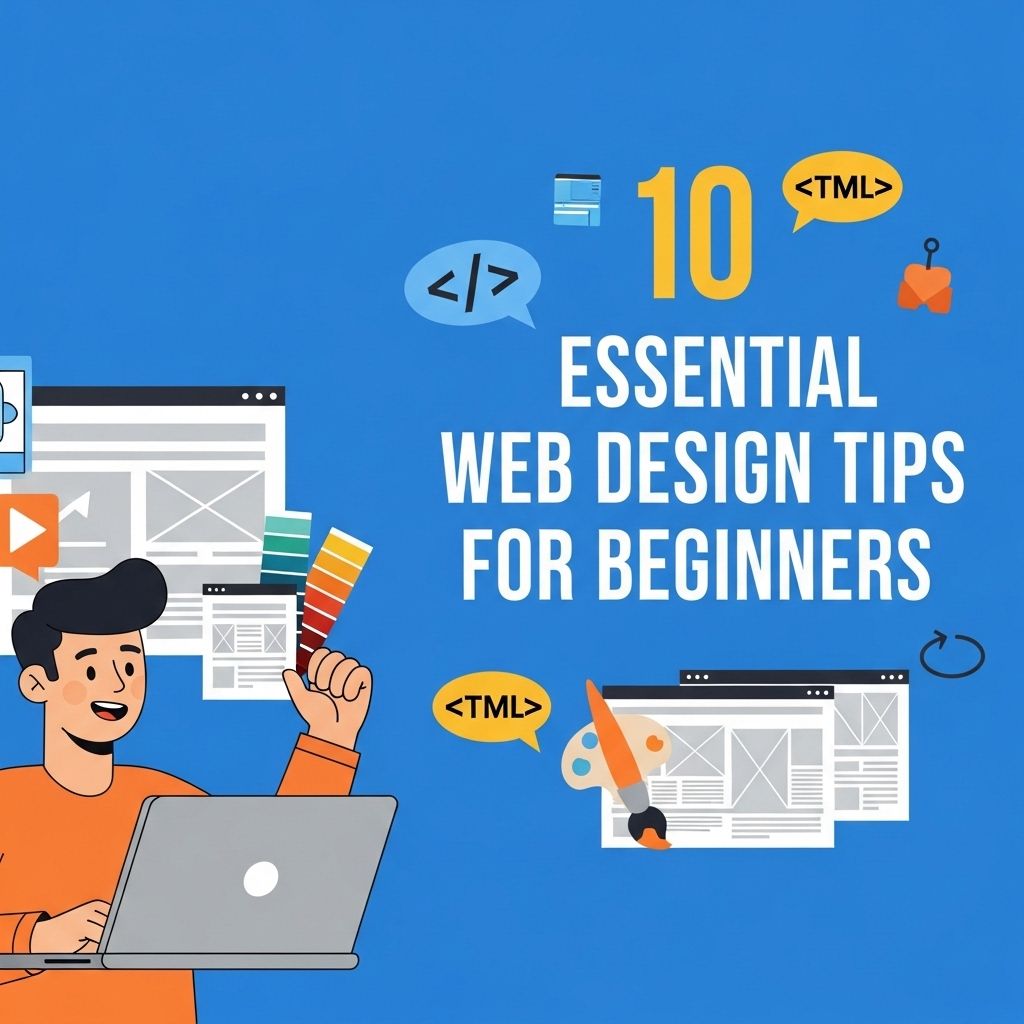In the digital age, having a well-designed website is crucial for any business or individual looking to establish an online presence. As a beginner in web design, it can be overwhelming to figure out where to start. With the right tips and strategies, however, you can create a visually appealing and user-friendly website. This article outlines ten essential web design tips that will help you build a solid foundation and enhance your skills as a web designer.
1. Understand Your Audience
Before diving into design, take the time to understand who your audience is. Knowing your target demographic will influence your design choices, from layout to color scheme. Consider the following:
- Age group
- Interests
- Preferred reading habits
Conduct surveys or engage in social media polls to gather insights about your audience. This information will guide your design decisions, ensuring that your website resonates with the intended users.
2. Prioritize User Experience (UX)
User experience is the cornerstone of effective web design. A website with excellent UX keeps visitors engaged and encourages them to return. To enhance UX, consider:
- Simple Navigation: Ensure that your site is easy to navigate.
- Fast Loading Speed: Optimize images and scripts to reduce loading times.
- Mobile Responsiveness: Design for various devices, especially smartphones.
Navigation Tips:
Use clear labels for navigation menus and maintain a consistent structure across your site.
3. Use a Grid Layout
A grid layout helps to create a structured and organized design. Grids guide the placement of elements on your page, making it easier for visitors to locate information. Here are some benefits of using a grid layout:
- Visual balance
- Consistent alignment
- Improved readability
Popular grid systems include the 12-column grid and the Bootstrap framework.
4. Choose Your Color Scheme Wisely
The colors you choose for your website can significantly impact user perception. A well-thought-out color scheme can enhance brand recognition and evoke desired emotions.
Color Theory Basics:
Familiarize yourself with the basics of color theory, including:
- Complementary Colors: Opposite colors on the color wheel.
- Analogous Colors: Colors next to each other on the wheel.
- Triadic Colors: Three colors that are evenly spaced on the wheel.
Tools like Adobe Color and Coolors can help you create appealing color palettes.
5. Typography Matters
Choosing the right fonts is essential to a successful web design. Good typography enhances readability and sets the tone for your website. Here are some tips:
- Limit font usage to 2-3 complementary fonts.
- Ensure font sizes are appropriate for different devices.
- Use web-safe fonts or Google Fonts for consistency.
Font Pairing Examples:
| Header Font | Body Font |
|---|---|
| Montserrat | Open Sans |
| Playfair Display | Roboto |
6. Optimize for SEO
Search engine optimization (SEO) is critical for making your website discoverable. Consider implementing the following SEO strategies:
- Use descriptive and keyword-rich titles.
- Optimize images with alt tags and proper file names.
- Write unique meta descriptions for each page.
Regularly updating your website’s content can also positively impact your SEO ranking.
7. Incorporate Multimedia
Utilizing multimedia elements such as images, videos, and infographics can enrich your website’s content. Here’s how to use multimedia effectively:
- Ensure media files are optimized for fast loading.
- Use captions and descriptions for context.
- Incorporate videos to explain complex topics.
Best Practices for Images:
Use high-quality images and avoid excessive stock photos that may clutter your design.
8. Create Quality Content
Content is king in the realm of web design. Ensure your website features high-quality, engaging, and relevant content that meets the needs of your audience. Strategies include:
- Regularly updating blog posts or articles.
- Including calls-to-action (CTAs) to guide user behavior.
- Utilizing storytelling techniques to captivate your audience.
9. Test and Iterate
Web design is an iterative process. After launching your website, continuously test its features and gather feedback to make improvements. Here are ways to test and iterate:
- Conduct usability testing with real users.
- Monitor analytics to identify user behavior.
- Implement A/B testing for design elements.
10. Stay Updated with Trends
The world of web design is ever-evolving. Keep yourself updated with the latest trends and technologies in web design to remain competitive. Consider the following:
- Follow industry blogs and podcasts.
- Participate in online forums and web design communities.
- Experiment with new tools and software.
In conclusion, mastering web design requires a combination of creativity, technical knowledge, and an understanding of user behavior. By applying these ten essential tips, beginners can build a strong foundation in web design and create websites that are not only aesthetically pleasing but also functional and user-friendly. Start your journey by implementing these strategies, and watch your web design skills flourish.
FAQ
What are the basic principles of web design for beginners?
The basic principles of web design include clarity, consistency, user-friendly navigation, mobile responsiveness, and effective use of color and typography.
How important is mobile responsiveness in web design?
Mobile responsiveness is crucial as it ensures that your website functions well on all devices, providing a better experience for users who access your site from smartphones and tablets.
What role does color play in web design?
Color plays a significant role in web design as it can evoke emotions, create brand identity, and improve readability. Choosing a color palette that aligns with your brand is essential.
How can I improve website navigation?
To improve website navigation, keep it simple and intuitive, use clear labels for menu items, and ensure that important pages are easily accessible.
Why is typography important in web design?
Typography is important in web design because it affects readability, user engagement, and the overall aesthetic of your website. Choosing the right fonts can enhance user experience.
What are some common mistakes to avoid in web design?
Common mistakes to avoid in web design include cluttered layouts, inconsistent styling, poor navigation, and neglecting mobile optimization.




